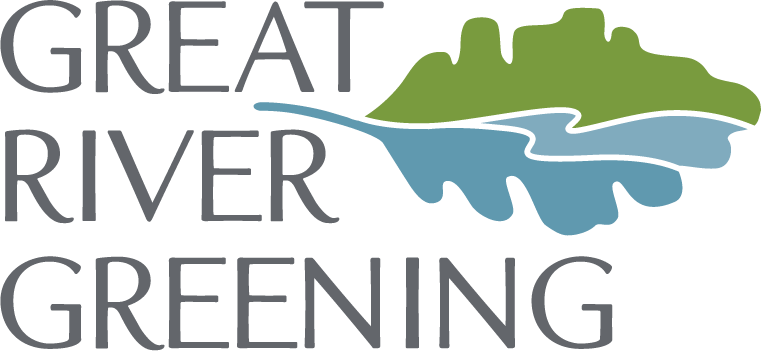From our Executive Director: Join me for No Mow May!
I love when doing the right thing is also easier. This spring, you may see some signs up in shaggy, neighborhood lawns promoting the No Mow May campaign. I quietly participated in this last year, not mowing our lawn but also not seeing a lot of anything other than turf grass growing.
The idea around No Mow May is simple: don’t mow for the month, allowing flowering “weeds” to grow and provide a food source for early pollinators. It’s a campaign that Great River Greening worked with the City of Saint Paul to officially approve this year, removing any ordinance for the month prohibiting tall weeds.
No mowing for a month? What good will this do?
Even small changes make a difference. You reduce your carbon footprint by not mowing and improve pollinator habitat a little bit. Ready to expand your impact after No Mow May? Think about converting your lawn to a pollinator-friendly lawn. New this year, I seeded with a pollinator-friendly seed mix and I am excited to see how it looks this spring.
Executive Director Kateri Routh’s backyard pollinator garden (pre-bloom left; in bloom right).
And there is more you can do to help pollinators right at home! A few years ago, I planted a pollinator garden with native plants both in my front and back yard. While it doesn’t look like much now, it will be full of bees and butterflies later in the season. These later-blooming flowers typically don’t benefit pollinators in early spring, but what does is my flowering crabapple tree! Early blooms, like the crabapple, are a good food source for bees and other pollinators.
Early-blooming crabapple tree
Improving pollinator habitat is important for all of us, as pollinators are critical to our food chain.
Join your neighbors in No Mow May this spring, see what blooms, and consider planting a flowering tree or pollinator garden for benefits throughout the growing season!
Click here to learn how Saint Paul residents can get a FREE lawn sign for No Mow May.
Contributors: Kateri Routh
Photo Credits: Garden photos by Kateri Routh. No Mow May sign designed by City of Saint Paul.




